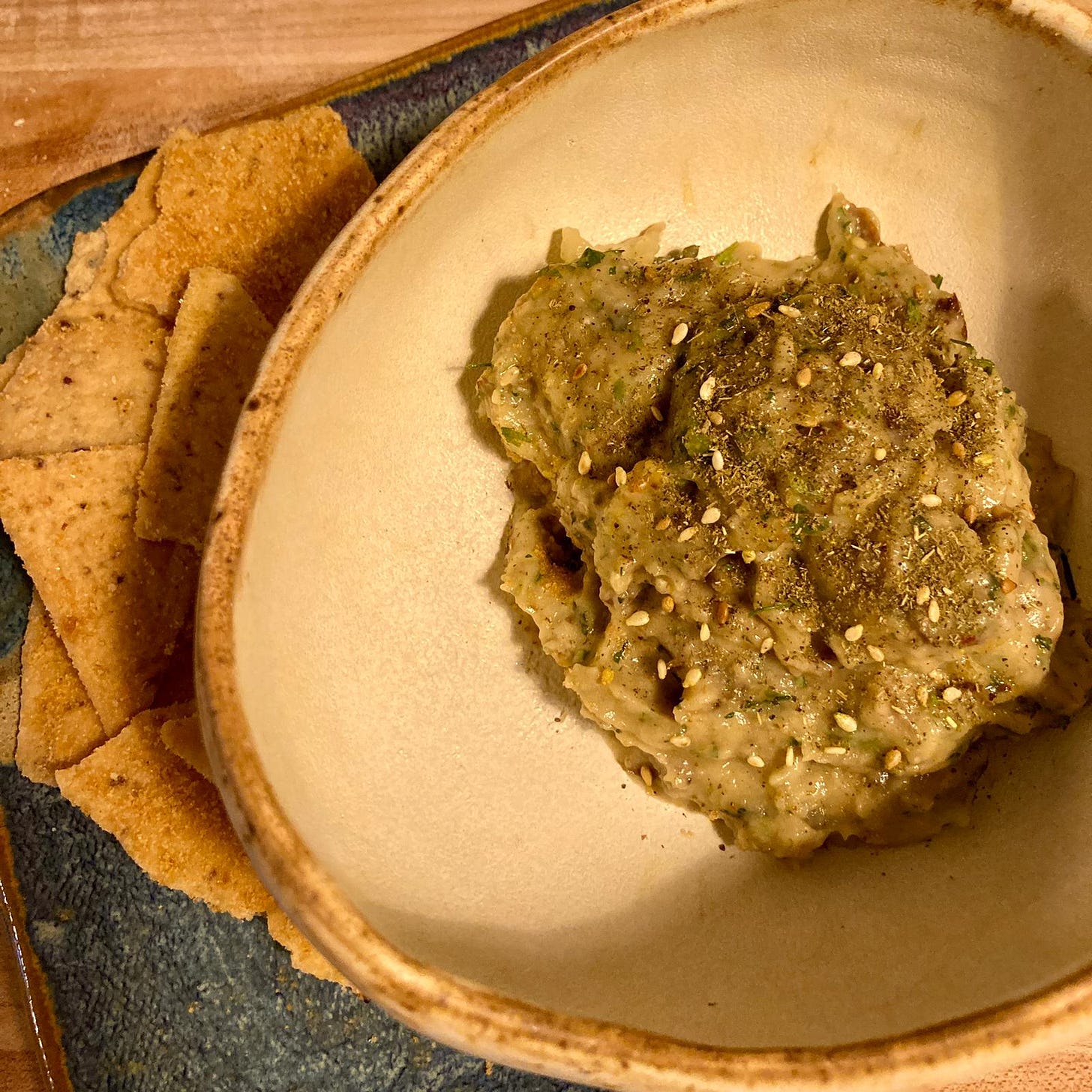In today’s edition, we talk big picture water conservation, the artistic allure of shopping carts, and what happens to an apple (and the human spirit?) over the course of the pandemic.
If someone shared this newsletter with you, subscribe here:
At the beginning of June I was in the middle of my dough day, when I make all of the bread dough for the next day’s Otto’s Bread Club bake. Near the end of the first rise I turned on the tap to fill up some water for shaping the dough. But nothing came out. I live in a very old house with very old pipes, and my first thought was that there was some sort of plumbing issue. But it turns out the pipes were fine...I just hadn’t paid my water bill in three months!
I hadn’t updated my autopay after closing a credit card, and I am deeply allergic to opening my mail in a timely manner. So the city shut off my water.
Luckily, a patient City of Stuart employee helped me sort it all out, and the water returned in a matter of hours.
Losing water in the middle of dough day definitely made me panic, but it really was just a minor inconvenience. It did, however, make me reflect on how incredibly fortunate I am to take for granted a never-ending supply of clean water.
The City of Stuart is goofily proud of it’s “Best Tasting Drinking Water”. It’s even on the “Welcome to Stuart” sign! But forget the taste...many people in the U.S. still, in 2021, do not have safe tap water. Flint was not an anomaly. Just under 1 in 10 Americans lack access to safe drinking water, and almost a third of the population is exposed to toxic chemicals in their tap water.[1]
Sidebar: I am in no way advocating for turning off the tap and opening a plastic bottle. Bottled water is worse than tap by almost every measure — price, safety, flavor, environmental impact, you name it. Not to mention corporations like Nestle have paid bargain-basement prices to drain Florida’s crystal blue natural springs and sell water to consumers for a mega-profit.
I try to be thoughtful about my individual water consumption, but more important will be systemic fixes to protect this precious resource. Farmers can make efficient techniques like drip irrigation the norm. Residents can insist on better drainage and permeable surfaces in all new construction in their communities. Legislators can pass a bill that can fix the nation’s crumbling water infrastructure (leaky pipes result in 6 billion lost gallons of water a day).
Climate change is a major threat to the water supply (see the video below for a quick brush up on the science), and a widespread reckoning of how individuals, municipalities, and industries consume and conserve water is long overdue.
I am still trying to water starve the lawn I inherited at my home lawn (it’s almost completely dead! 😆) and take other little actions around the house to reduce my personal consumption. But more importantly, I want to find a way to advocate for water conservation on a community level.
I want to make the City of Stuart famous not just for it’s delicious drinking water, but also it’s innovative conservation techniques.
hugs,
Jackie
1.https://www.theguardian.com/us-news/2020/jun/23/us-clean-water-crisis-2020-guardian-us-editor
⏫🐖⏫High on the Hog | Netflix
This four-part Netflix series is a gorgeous, contemplative ode to African American cuisine. The show is based on the seminal book of the same name by Jessica B. Harris, and hosted by Stephen Satterfield, founder of food culture magazine Whetstone. Satterfield is a wonderful guide — brimming with an authentic curiosity and a palpable pride for the culinary contributions of Black Americans.
African slaves brought rice to the country, which became the original foundation for America’s wealth (yes, even more than cotton). Black Americans were responsible for popularizing macaroni and cheese, barbecue, oysters, and many other American classics. They were the first private caterers and the first cowboys. “High on the Hog” is filled with fascinating history, but also celebrates the work of many Black chefs and food scholars who are making their mark on contemporary food culture, like Gabrielle Carter, Michael Twitty, Chris Williams, and Jerrelle Guy. With Juneteenth around the corner, consider celebrating the achievements of Black food pioneers with a viewing of “High on the Hog.”
🛒Everyone Has a Theory About Shopping Carts | New York Times
Sylvan Goldman invented the shopping cart in the 1930s to encourage people to buy more groceries, and their popularity turned them into a special part of Americana.
NY Times writer Christine Hauser journeys through cartspiration. From short films to Banksy artwork to a Neil Young song to the 2006 book “The Stray Shopping Carts of Eastern North America: A Guide to Field Identification”, shopping carts seem to have their own subculture.
Naturally their pop culture rise also means controversy. In online forums, people promote the “Shopping Cart Theory,” which “posits that the decision to return a cart is the ultimate test of moral character and a person’s capacity to be self-governing.” They can be a nuisance for people with disabilities if left in a handicapped spot or blocking an entrance to a store. But others argue for grace for those who don’t return their cart, saying they might be struggling with their own disability or afraid to leave children unattended. Some state legislators have started proposing laws to fine shoppers or retailers for not bringing back carts. It’s the latest chapter for an unlikely and enduring cultural artifact.
🍎A Crumpled, Dried-Out Relic of the Pandemic | The Atlantic
Rachel Gutman returned to The Atlantic office after beginning remote work 438 days ago to find a perfectly desiccated Envy apple on a colleague’s desk.
The climate-controlled office transformed the apple — which now looked more like a shriveled date — into a biological marvel. Apples are one of the hardiest, longest lasting fruits people consume thanks to the peel and a waxy cuticle that protects it from water loss and microbes. But still, shouldn’t an apple left alone for that long be “a puddle of putrid grid”? Gutman decided to investigate, and ask the most important question: Can she still eat it?


Maybe tasting the apple would be a way to exorcise the pandemic year. She wrote, “After more than a year of waiting in place for the world to become a little more vibrant, it was impossible not to feel a kinship with this plucky little fruit—crumpled, dehydrated, a little bit smelly, but alive.”
Roasted Eggplant Dip with Preserved Lemon
Eggplants can handle the heat, which means they are one of the few normie crops that can be grown throughout the South Florida summer. I used some lovely medium-sized, white-fleshed eggplants from CoLab Farms to make this simple dip, perfect for slopping on toast, munching with celery, or stirring into a pasta with feta and fresh herbs.
Makes about 3 cups of dip
Ingredients
4 medium-sized eggplant or 1 large eggplant
1 small bunch cilantro, roughly chopped (including stems)
2-3 cloves garlic (or 1/2 teaspoon fermented garlic paste )
half a salt-preserved lemon OR juice and zest of half a lemon + 1/2 teaspoon salt
1 tablespoon zaatar
1/2 teaspoon hot chili powder
1/4 cup olive oil + more for roasting eggplant
Salt for roasting eggplant
Step-by-Step
Preheat oven to 400°F.
Slice stem off eggplants and cut in half lengthwise. On a baking sheet, generously drizzle eggplant halves with olive oil and sprinkle with salt. Rub oil into flesh and skin of eggplant. Arrange eggplant on baking sheet, flesh-side down. Bake for 25-30 minutes, until extremely soft.
Place eggplant along with the rest of the ingredients into a blender. Pulse until the consistency is to your liking. Taste and adjust flavor as needed.
From the Insta:
Happy Father’s Day to Otto J. Vitale! (And to all the special dads out there 👨💼)
Vaccinated grandmothers only crave one thing 👵👇
Talk to Us
Send in your comments, mailbag questions, recipe mishaps, or cooking tips: sunshineandmicrobes@gmail.com. Also do us a favor and follow us on Facebook and Instagram. Visit our website and cook yourself something nice.
If you enjoyed this email, please share it with others. If someone forwarded this to you, click the button to sign up:
----------------------------------------------------------------------------------------
Sunshine + Microbes team
Jackie Vitale is a cook and kitchen educator based in Stuart, Fla . She runs Otto’s Bread Club and is co-founder of the Florida Ferment Fest. Her newsletter explores the intersection of food, culture, environment and community.
Matt Levin is a communications strategist at the ACLU of Texas. He edits Sunshine + Microbes and contributes other scraps to each issue.










